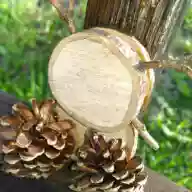[2025] Bon Odori songs every kid knows! A roundup of fun festival tunes
Bon Odori, a quintessential summer tradition! Festival stalls sell games and delicious food, making it hugely popular with kids.
Here, we’ll introduce a variety of wonderful Bon Odori songs—from tunes children already know to unique arrangements of J-pop and Western music.
Lots of new songs are appearing, too.
Don’t worry if you’re not sure about the dance steps—what matters is having fun.
Kids and adults alike, be sure to join in Bon Odori and make some great memories!
- Popular Festival Songs Ranking [2025]
- [Let's Enjoy Japanese Festival Songs!] Songs about festivals. Famous songs related to festivals.
- [2025] A classic song themed around summer festivals. A song of summer memories.
- Japanese ondō: a seasonal tradition everyone can enjoy.
- [Childcare] Summer songs: Full of fun! Summer nursery rhymes & finger-play songs
- Games that liven up festivals. Ideas that children can enjoy.
- Get pumped with popular songs from “Okaasan to Issho”! A collection of timeless tunes everyone will want to sing together
- Nursery Rhyme Popular Song Rankings [2025]
- For Seniors: Festive Attractions to Liven Up Festivals—Games and Recreational Activities
- [2025] Latest! Summary of Trending Vocaloid Songs
- Children’s Songs You Can Sing in August: Summer-Friendly Kids’ Songs and Fingerplay Rhymes
- [For Band Members] Recommended Anime Songs for Cultural and School Festival Live Performances [2025]
- [For Men] The Ultimate and Newest Anime Songs That Hype Up Any Party or Performance [2025]
[2025] Bon Odori Songs Every Kid Knows! A Fun Festival Song Collection (71–80)
First Step Ondo

Since it’s an AKB48-style bon dance, the girls might be more motivated to watch carefully and learn it well.
The boys also know AKB48, so I think they’ll enjoy learning the dance together.
In the instructional video for the choreography, members Juri Takahashi and Yuka Tano appear, so the children will likely have fun learning it, and their level of interest may be different as well.
Gōshū Ondo

It’s a Bon Odori song that’s famous mainly in the Kansai region, especially around Shiga Prefecture.
It originally began as a chant sung by practitioners to spread Buddhist teachings, and over time it became beloved among the general public.
Because it’s an old song, it’s said to have had a major influence on later-ondo styles that emerged afterward.
The Ball and the Lord

This nursery rhyme vividly depicts a summer festival scene.
Set to a light, lilting melody, it unfolds a nostalgic yet charming festival landscape.
The exchange between a young girl and a feudal lord, told through a bouncing handball, is sure to stir children’s pure longing and curiosity.
The lyrics by Saijō Yaso and the music by Nakayama Shimpei harmonize beautifully, conveying the appeal of Japan’s traditional children’s songs.
Since its release in 1929, it has been covered by many singers and cherished as a classic.
It is also included on Tsutomu Aragaki’s album “Singing Japan.” Give it a listen when you want to feel the bustle of a summer festival or to experience a nursery rhyme rich in Japanese atmosphere—it will surely soothe your heart.
Shimajiro Ondo

This is the bon-odori dance song for Shimajiro, the main character of the children’s educational magazine “Kodomo Challenge.” As you’d expect from a song for early childhood education, both the lyrics and the choreography are very easy to understand and dance to.
It’s made so that families and friends can enjoy dancing together at bon dances and summer festivals, making it a very reassuring song.
If you wear a headband and dance with lots of energy, it will be even more exciting.
Mount Bandai of Aizu

Its roots lie in the Aizu folk song “Genyo-bushi” as the original tune, and Mount Bandai is an active volcano rising north of Lake Inawashiro.
There are various theories about the “Ohara Shosuke” who appears in the festival chant lyrics: candidates for the model include a merchant who made a fortune in lumber during the Edo period, an activist of the same name in the late Edo era, and Kugōrō, a master lacquerware artisan from Aizu known as a heavy drinker.
Soma Bon Song

It is one of the folk songs handed down in the Soma region of Fukushima Prefecture.
Its roots appear to be in a “Hōnen Odori,” a dance once sung to thank the rice-field deity for a bountiful harvest.
This is also reflected in the opening lyrics.
Covered by major enka stars, “Soma Bon Uta” went on to gain nationwide recognition and popularity.
Tokyo Ondo

It was originally a song called “Marunouchi Ondo,” used for a Bon Odori held in Hibiya Park, Tokyo, in 1932.
It’s also well known as a cheer song for the professional baseball team, the Tokyo Yakult Swallows.
It was recorded in 1933, became a huge hit, and spread throughout the country.






